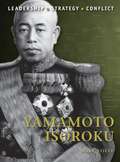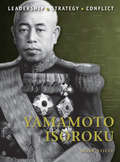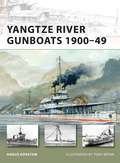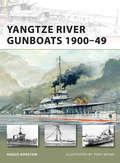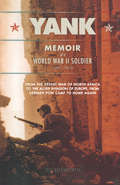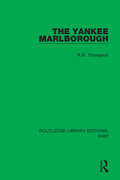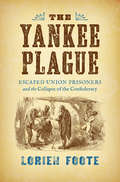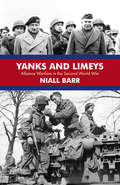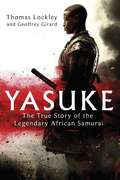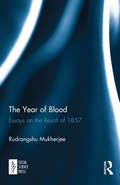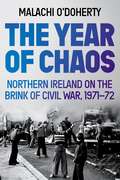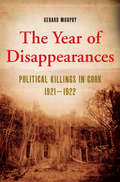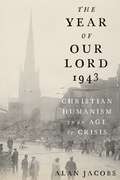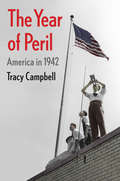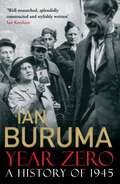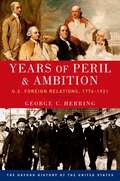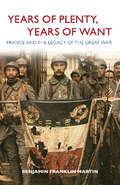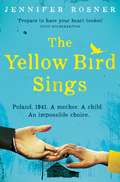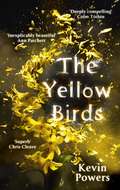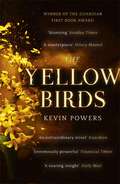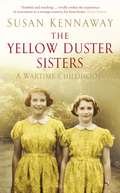- Table View
- List View
Yamamoto Isoroku (Command)
by Mark Stille Adam HookAdmiral Yamamoto Isoroku was the defining Japanese naval commander of World War II. Yamamoto's career in the Imperial Japanese Navy started in the early years of the 20th century and he saw service in the Russo–Japanese War, being wounded in the battle of Tsushima in 1904. He went on to study at Harvard University and serve as a naval attaché in the inter-war years, an experience that was to give him a unique insight into the American psyche. Despite the success of his daring pre-emptive strike on Pearl Harbor in 1941, that damaged the US Pacific Fleet and ushered in the Pacific War, Yamamoto's subsequent handling of the Japanese combined fleet can be called into question. The final campaign commanded by Yamamoto was that around Guadalcanal, where Yamamoto's myth of excellence will be totally laid bare. Despite a considerable numerical advantage over the Americans, Yamamoto never brought this advantage to bear. The result was a devastating defeat for the Imperial Japanese Navy and, eventually, the death of Yamamoto himself.
Yamamoto Isoroku (Command #26)
by Mark Stille Mr Adam HookAdmiral Yamamoto Isoroku was the defining Japanese naval commander of World War II. Yamamoto's career in the Imperial Japanese Navy started in the early years of the 20th century and he saw service in the Russo–Japanese War, being wounded in the battle of Tsushima in 1904. He went on to study at Harvard University and serve as a naval attaché in the inter-war years, an experience that was to give him a unique insight into the American psyche. Despite the success of his daring pre-emptive strike on Pearl Harbor in 1941, that damaged the US Pacific Fleet and ushered in the Pacific War, Yamamoto's subsequent handling of the Japanese combined fleet can be called into question. The final campaign commanded by Yamamoto was that around Guadalcanal, where Yamamoto's myth of excellence will be totally laid bare. Despite a considerable numerical advantage over the Americans, Yamamoto never brought this advantage to bear. The result was a devastating defeat for the Imperial Japanese Navy and, eventually, the death of Yamamoto himself.
Yangtze River Gunboats 1900–49 (New Vanguard)
by Tony Bryan Angus KonstamFrom the end of the 19th century through the first half of the 20th, most Western powers maintained a naval presence in China. These gunboats protected traders and missionaries, safeguarded national interests, and patrolled Chinese rivers in search of pirates. It was a wild, lawless time in China as ruthless warlords fought numerous small wars to increase their power and influence. This book covers the gunboats of all the major nations that stationed naval forces in China, including America, Britain, France, Germany, Italy, Portugal, and Japan, and looks at such famous incidents as the Japanese bombing of the USS Patay and the dramatic escape of the HMS Amethyst from Communist forces in 1947, which marked the end of the gunboat era.
Yangtze River Gunboats 1900–49 (New Vanguard #181)
by Tony Bryan Angus KonstamFrom the end of the 19th century through the first half of the 20th, most Western powers maintained a naval presence in China. These gunboats protected traders and missionaries, safeguarded national interests, and patrolled Chinese rivers in search of pirates. It was a wild, lawless time in China as ruthless warlords fought numerous small wars to increase their power and influence. This book covers the gunboats of all the major nations that stationed naval forces in China, including America, Britain, France, Germany, Italy, Portugal, and Japan, and looks at such famous incidents as the Japanese bombing of the USS Patay and the dramatic escape of the HMS Amethyst from Communist forces in 1947, which marked the end of the gunboat era.
Yank: Memoir of a World War II Soldier (1941-1945) - From the Desert War of North Africa to the Allied Inv
by Ted EllsworthTed Ellsworth was a young Dartmouth grad in 1941. In the years before the U.S. joined the Second World War effort, American men who wished to fight against Hitler were granted permission from President Roosevelt and the U.S. Congress to join the British army. In normal circumstance, fighting for another nation's army would be an automatic forfeiture of U.S. citizenship (as noted on U.S. passports). Yank begins with goodbyes to Ellworth's young wife and family. It covers his crossing to Britain, initial stay in London, assignment to a North African tank regiment and the campaign there, participation in the invasion of Italy and the second wave of D-Day, accounts of fierce battles, being taken prisoner by the Germans and shipped to a POW camp, the camp deprivations, liberation by the Russians, and finally, the year Ellsworth spent wandering eastern Europe with no dog-tags, after the war had ended, trying to reach a city from which he could ship back home. Ellsworth had been officially MIA for over two years, and everyone assumed he was dead. The final pages detail Ellsworth's homecoming when his wife hand-delivers the beautiful and intimate note that she'd written him when he was first reported missing.
The Yankee Marlborough (Routledge Library Editions: WW2 #48)
by R.W. ThompsonThis book, first published in 1963, is an early biography of Winston Churchill, examining his personality and character that was woven so closely through the texture of Britain’s story in the first half of the twentieth century. In attempting to discover a complete and complex Churchill, in his character, ambitions and personal experiences, the book seeks to present a clearer insight into the events of Churchill’s life.
The Yankee Marlborough (Routledge Library Editions: WW2 #48)
by R.W. ThompsonThis book, first published in 1963, is an early biography of Winston Churchill, examining his personality and character that was woven so closely through the texture of Britain’s story in the first half of the twentieth century. In attempting to discover a complete and complex Churchill, in his character, ambitions and personal experiences, the book seeks to present a clearer insight into the events of Churchill’s life.
The Yankee Plague: Escaped Union Prisoners and the Collapse of the Confederacy (Civil War America)
by Lorien FooteDuring the winter of 1864, more than 3,000 Federal prisoners of war escaped from Confederate prison camps into South Carolina and North Carolina, often with the aid of local slaves. Their flight created, in the words of contemporary observers, a "Yankee plague," heralding a grim end to the Confederate cause. In this fascinating look at Union soldiers' flight for freedom in the last months of the Civil War, Lorien Foote reveals new connections between the collapse of the Confederate prison system, the large-scale escape of Union soldiers, and the full unraveling of the Confederate States of America. By this point in the war, the Confederacy was reeling from prison overpopulation, a crumbling military, violence from internal enemies, and slavery's breakdown. The fugitive Federals moving across the countryside in mass numbers, Foote argues, accelerated the collapse as slaves and deserters decided the presence of these men presented an opportune moment for escalated resistance. Blending rich analysis with an engaging narrative, Foote uses these ragged Union escapees as a lens with which to assess the dying Confederate States, providing a new window into the South's ultimate defeat.
Yanks and Limeys: Alliance Warfare in the Second World War
by Niall BarrIn the mid-twentieth century the relationship between America and Britain had a chequered past. Theirs was a history of protection and oppression, of rebellion and ultimately war. But then the shared crisis of the Second World War brought Britain and America closer than ever before or since, and saw an unprecedented level of military cooperation. How was such a radical shift possible? To uncover how this historically fraught relationship recovered from its inauspicious start, Niall Barr goes back to the origins of their shared military history in the American War of Independence and shows how these early days had ramifications for the later crucial alliance. Picking up the tale with America’s entry into the Second World War, Niall Barr tells the story of these two armies as they fought in the largest war in history, from the uppermost echelons of the relationship between Churchill and Roosevelt right down to battlefield level and the soldiers fighting side by side for a common cause.
Yasuke: The true story of the legendary African Samurai
by Geoffrey Girard Thomas LockleyWARRIOR. SAMURAI. LEGEND.The remarkable life of history's first foreign-born samurai, and his astonishing journey from Northeast Africa to the heights of Japanese society.The man who came to be known as Yasuke arrived in Japan in the 16th century, an indentured mercenary arriving upon one of the Portuguese ships carrying a new language, a new religion and an introduction to the slave trade. Curiously tall, bald, massively built and black skinned, he was known as a steadfast bodyguard of immense strength and stature, and swiftly captured the interest, and thence the trust, of the most powerful family in all of Japan. Two years later, he vanished.Yasuke is the story of a legend that still captures the imagination of people across the world. It brings to life a little known side of Japan - a gripping narrative about an extraordinary figure in a fascinating time and place.
The Year of Blood: Essays on the Revolt of 1857
by Rudrangshu MukherjeeRudrangshu Mukherjee places the ‘soldier-peasant’ at the forefront of the Revolt. Violence has rarely been described with so much realism and subtlety. The imaginative use of primary source materials adds clarity to accounts such as the massacre in Satichaura Ghat and the trial of Mangal Pandey. The layers of complexity that defined the relationship between the rulers and the subjugated are also exposed.
The Year of Blood: Essays on the Revolt of 1857
by Rudrangshu MukherjeeRudrangshu Mukherjee places the ‘soldier-peasant’ at the forefront of the Revolt. Violence has rarely been described with so much realism and subtlety. The imaginative use of primary source materials adds clarity to accounts such as the massacre in Satichaura Ghat and the trial of Mangal Pandey. The layers of complexity that defined the relationship between the rulers and the subjugated are also exposed.
The Year of Chaos: Northern Ireland on the Brink of Civil War, 1971-72
by Malachi O'Doherty'Frank and incisive - an insightful look at the most tumultuous period of the Troubles.' Ian Cobain'This is the Belfast I grew up in. Malachi writes from first-hand experience and brings back memories that will always resonate with those who lived in those times.' Eamonn HolmesIn the eleven months between August 1971 and July 1972, Northern Ireland experienced its worst year of violence. No future year of the Troubles experienced such death and destruction. The 'year of chaos' began with the introduction of internment of IRA suspects without trial, which created huge disaffection in the Catholic communities and provoked an escalation of violence. This led to the British government taking full control of Northern Ireland and negotiating directly with the IRA leadership. Operation Motorman, the invasion of barricaded no-go areas in Belfast and Derry, then dampened down the violence a year later. During this whole period, Malachi O'Doherty was a young reporter in Belfast, working in the city and returning home at night to a no-go area behind the barricades where the streets were patrolled by armed IRA men. Drawing on interviews, personal recollections and archival research, O'Doherty takes readers on a journey through the events of that terrible year - from the devastation of Bloody Sunday and Bloody Friday to the talks between leaders that failed to break the deadlock - which, he argues, should serve as a stark reminder of how political and military miscalculation can lead a country to the brink of civil war.
The Year of Disappearances: Political Killings in Cork 1921-1922
by Gerard Murphy‘Every spy who was shot in Cork was buried so that nothing was known about them. They just disappeared.’ These are the words of an IRA commander recalling the War of Independence in Cork city.The Year of Disappearances examines this claim and others like it.It uncovers a web of suspicion and paranoia that led to scores of men and boys being abducted from their homes before being executed as ‘enemies of the Republic’ and their bodies buried.While some of this took place during the War of Independence, most of it happened the following year, during the so-called ‘Cork Republic’. The net result was to change the demographic of the south-eastern corner of the city for ever, with hundreds of families fleeing and up to fifty individuals buried in unmarked graves in surrounding areas.Using a wide range of previously untapped sources, Murphy shines new light on one of the darker episodes of twentieth-century Irish history.
The Year of Our Lord 1943: Christian Humanism in an Age of Crisis
by Alan JacobsBy early 1943, it had become increasingly clear that the Allies would win the Second World War. Around the same time, it also became increasingly clear to many Christian intellectuals on both sides of the Atlantic that the soon-to-be-victorious nations were not culturally or morally prepared for their success. A war won by technological superiority merely laid the groundwork for a post-war society governed by technocrats. These Christian intellectuals-Jacques Maritain, T. S. Eliot, C. S. Lewis, W. H. Auden, and Simone Weil, among others-sought both to articulate a sober and reflective critique of their own culture and to outline a plan for the moral and spiritual regeneration of their countries in the post-war world. In this book, Alan Jacobs explores the poems, novels, essays, reviews, and lectures of these five central figures, in which they presented, with great imaginative energy and force, pictures of the very different paths now set before the Western democracies. Working mostly separately and in ignorance of one another's ideas, the five developed a strikingly consistent argument that the only means by which democratic societies could be prepared for their world-wide economic and political dominance was through a renewal of education that was grounded in a Christian understanding of the power and limitations of human beings. The Year of Our Lord 1943 is the first book to weave together the ideas of these five intellectuals and shows why, in a time of unprecedented total war, they all thought it vital to restore Christianity to a leading role in the renewal of the Western democracies.
The Year of Our Lord 1943: Christian Humanism in an Age of Crisis
by Alan JacobsBy early 1943, it had become increasingly clear that the Allies would win the Second World War. Around the same time, it also became increasingly clear to many Christian intellectuals on both sides of the Atlantic that the soon-to-be-victorious nations were not culturally or morally prepared for their success. A war won by technological superiority merely laid the groundwork for a post-war society governed by technocrats. These Christian intellectuals-Jacques Maritain, T. S. Eliot, C. S. Lewis, W. H. Auden, and Simone Weil, among others-sought both to articulate a sober and reflective critique of their own culture and to outline a plan for the moral and spiritual regeneration of their countries in the post-war world. In this book, Alan Jacobs explores the poems, novels, essays, reviews, and lectures of these five central figures, in which they presented, with great imaginative energy and force, pictures of the very different paths now set before the Western democracies. Working mostly separately and in ignorance of one another's ideas, the five developed a strikingly consistent argument that the only means by which democratic societies could be prepared for their world-wide economic and political dominance was through a renewal of education that was grounded in a Christian understanding of the power and limitations of human beings. The Year of Our Lord 1943 is the first book to weave together the ideas of these five intellectuals and shows why, in a time of unprecedented total war, they all thought it vital to restore Christianity to a leading role in the renewal of the Western democracies.
The Year of Peril: America in 1942
by Tracy CampbellA fascinating chronicle of how the character of American society revealed itself under the duress of World War II The Second World War exists in the American historical imagination as a time of unity and optimism. In 1942, however, after a series of defeats in the Pacific and the struggle to establish a beachhead on the European front, America seemed to be on the brink of defeat and was beginning to splinter from within. Exploring this precarious moment, Tracy Campbell paints a portrait of the deep social, economic, and political fault lines that pitted factions of citizens against each other in the post–Pearl Harbor era, even as the nation mobilized, government†‘aided industrial infrastructure blossomed, and parents sent their sons off to war. This captivating look at how American society responded to the greatest stress experienced since the Civil War reveals the various ways, both good and bad, that the trauma of 1942 forced Americans to redefine their relationship with democracy in ways that continue to affect us today.
Year Zero: A History of 1945
by Ian BurumaMany books have been written, and continue to be written, about the Second World War: military histories, histories of the Holocaust, the war in Asia, or collaboration and resistance in Europe. Few books have taken a close look at the immediate aftermath of the worldwide catastrophe.Drawing on hundreds of eye-witness accounts and personal stories, this sweeping book examines the seven months (in Europe) and four months (in Asia) that followed the surrender of the Axis powers, from the fate of Holocaust survivors liberated from the concentration camps, and the formation of the state of Israel, to the incipient civil war in China, and the allied occupation of Japan. It was a time when terrible revenge was taken on collaborators and their former masters; of ubiquitous black markets, war crime tribunals; and the servicing of millions of occupation troops, former foes in some places, liberators in others. But Year Zero is not just a story of vengeance. It was also a new beginning, of democratic restorations in Japan and West Germany, of social democracy in Britain and of a new world order under the United Nations. If construction follows destruction, Year Zero describes that extraordinary moment in between, when people faced the wreckage, full of despair, as well as great hope. An old world had been destroyed; a new one was yet to be built.
Years of Peril and Ambition: U.S. Foreign Relations, 1776-1921 (Oxford History of the United States)
by George C. HerringPraised in the New York Times Book Review for its "Herculean power of synthesis," George C. Herring's 2008 From Colony to Superpower has won wide acclaim from critics and readers alike. Years of Peril and Ambition: U.S. Foreign Relations, 1776-1921 is the first volume of a new split paperback edition of that masterwork, making this award-winning title accessible to those with a particular interest in the first half of the United States' history. This first volume of Herring's international narrative charts the rise of the United States from a loose grouping of British colonies huddled along the Atlantic coast of North America into an emerging world power at the end of World War I. It tells an epic story of restless settlers pushing against weak restraints; of explorers, sea captains, adventurers, merchants, and missionaries carrying American ways to new lands. It analyzes countless crises, some resulting in war and others resolved peacefully. Above all, it is the tale of United States' expansion, commercial and political, across the North American continent, into the Caribbean and Pacific Ocean regions, and, economically, worldwide. Herring brings this first segment of America's dramatic emergence as a superpower to a close with the United States' post-World War I rise to the status of the world's most powerful nation, poised -- however unsteadily --for global engagement in what would be called the American Century. Years of Peril and Ambition highlights the ongoing impact of the nation's international affairs on the household names of U.S. history but also on ordinary citizens. Featuring a grand cast of characters, encompassing statesmen and presidents, diplomats and foreigners, and rogues and rascals alike, this fast-paced account illuminates the central importance of foreign relations to the existence and survival of the nation.
Years of Peril and Ambition: U.S. Foreign Relations, 1776-1921 (Oxford History of the United States)
by George C. HerringPraised in the New York Times Book Review for its "Herculean power of synthesis," George C. Herring's 2008 From Colony to Superpower has won wide acclaim from critics and readers alike. Years of Peril and Ambition: U.S. Foreign Relations, 1776-1921 is the first volume of a new split paperback edition of that masterwork, making this award-winning title accessible to those with a particular interest in the first half of the United States' history. This first volume of Herring's international narrative charts the rise of the United States from a loose grouping of British colonies huddled along the Atlantic coast of North America into an emerging world power at the end of World War I. It tells an epic story of restless settlers pushing against weak restraints; of explorers, sea captains, adventurers, merchants, and missionaries carrying American ways to new lands. It analyzes countless crises, some resulting in war and others resolved peacefully. Above all, it is the tale of United States' expansion, commercial and political, across the North American continent, into the Caribbean and Pacific Ocean regions, and, economically, worldwide. Herring brings this first segment of America's dramatic emergence as a superpower to a close with the United States' post-World War I rise to the status of the world's most powerful nation, poised -- however unsteadily --for global engagement in what would be called the American Century. Years of Peril and Ambition highlights the ongoing impact of the nation's international affairs on the household names of U.S. history but also on ordinary citizens. Featuring a grand cast of characters, encompassing statesmen and presidents, diplomats and foreigners, and rogues and rascals alike, this fast-paced account illuminates the central importance of foreign relations to the existence and survival of the nation.
Years of Plenty, Years of Want: France and the Legacy of the Great War
by Benjamin Franklin MartinThe Great War that engulfed Europe between 1914 and 1918 was a catastrophe for France. French soil was the site of most of the fighting on the Western Front. French dead were more than 1.3 million, the permanently disabled another 1.1 million, overwhelmingly men in their twenties and thirties. The decade and a half before the war had been years of plenty, a time of increasing prosperity and confidence remembered as the Belle Epoque or the good old days. The two decades that followed its end were years of want, loss, misery, and fear. In 1914, France went to war convinced of victory. In 1939, France went to war dreading defeat.To explain the burden of winning the Great War and embracing the collapse that followed, Benjamin Martin examines the national mood and daily life of France in July 1914 and August 1939, the months that preceded the two world wars. He presents two titans: Georges Clemenceau, defiant and steadfast, who rallied a dejected nation in 1918, and Edouard Daladier,hesitant and irresolute, who espoused appeasement in 1938 though comprehending its implications. He explores novels by a constellation of celebrated French writers who treated the Great War and its social impact, from Colette to Irène Némirovsky, from François Mauriac to Antoine de Saint-Exupéry. And he devotes special attention to Roger Martin du Gard, the1937 Nobel Laureate, whose roman-fleuve The Thibaults is an unrivaled depiction of social unraveling and disillusionment.For many in France, the legacy of the Great War was the vow to avoid any future war no matter what the cost. They cowered behind the Maginot Line, the fortifications along the eastern border designed to halt any future German invasion. Others knew that cost would be too great and defended the "Descartes Line": liberty and truth, the declared values of French civilization. In his distinctive and vividly compelling prose, Martin recounts this struggle for the soul of France.
The Yellow Bird Sings: A Novel
by Jennifer RosnerPoland, 1941. A mother. A child. An impossible choice.Poland, 1941. After the Jews in their town are rounded up, Róza and her five-year-old daughter, Shira, spend day and night hidden in a farmer's barn. Forbidden from making a sound, only the yellow bird from her mother's stories can sing the melodies Shira composes in her head.Róza does all she can to take care of Shira and shield her from the horrors of the outside world. They play silent games and invent their own sign language. But then the day comes when their haven is no longer safe, and Róza must face an impossible choice: whether the best thing she can do for her daughter is keep her close by her side, or give her the chance to survive by letting her go . . . The Yellow Bird Sings by Jennifer Rosner is a powerfully gripping and deeply moving novel about the unbreakable bond between parent and child and the triumph of humanity and hope in even the darkest circumstances.'If you only read one book this year, make it The Yellow Bird Sings' AJ Pearce, author of Dear Mrs Bird
The Yellow Birds
by Kevin Powers<P>An unforgettable depiction of the psychological impact of war, by a young Iraq veteran and poet, THE YELLOW BIRDS is already being hailed as a modern classic. Everywhere John looks, he sees Murph. He flinches when cars drive past. His fingers clasp around the rifle he hasn't held for months. Wide-eyed strangers praise him as a hero, but he can feel himself disappearing. Back home after a year in Iraq, memories swarm around him: bodies burning in the crisp morning air. Sunlight falling through branches; bullets kicking up dust; ripples on a pond wavering like plucked strings. <P>The promise he made, to a young man's mother, that her son would be brought home safely. With THE YELLOW BIRDS, poet and veteran Kevin Powers has composed an unforgettable account of friendship and loss. It vividly captures the desperation and brutality of war, and its terrible after-effects. But it is also a story of love, of great courage, and of extraordinary human survival. Written with profound emotional insight, especially into the effects of a hidden war on families at home, THE YELLOW BIRDS is one of the most haunting, true and powerful novels of our time. <P>WINNER OF THE GUARDIAN FIRST BOOK AWARD <P>2012 WINNER OF THE HEMINGWAY/PEN AWARD <P>2012 NATIONAL BOOK AWARD FINALIST <P>AN AMAZON EDITOR'S PICK: BEST BOOKS OF 2012 <P>A NEW YORK TIMES TOP TEN BOOK OF THE YEAR <P>A TIMES BOOK OF THE YEAR <P>AN INDEPENDENT BOOK OF THE YEAR <P>A TLS BOOK OF THE YEAR <P>AN EVENING STANDARD BOOK OF THE YEAR <P>A SUNDAY EXPRESS BOOK OF THE YEAR <P>A GUARDIAN BOOK OF THE YEAR <P>A NEW YORK TIMES BOOK OF THE YEAR <P>A SCOTSMAN BOOK OF THE YEAR <P>A SUNDAY HERALD BOOK OF THE YEAR <P>AN IRISH TIMES BOOK OF THE YEAR
The Yellow Birds: A Novel (Litterature & Documents Ser.)
by Kevin PowersAn unforgettable depiction of the psychological impact of war, by a young Iraq veteran and poet, THE YELLOW BIRDS is already being hailed as a modern classic. WINNER OF THE GUARDIAN FIRST BOOK AWARD 2012NATIONAL BOOK AWARD FINALISTAN AMAZON EDITOR'S PICK: BEST BOOKS OF 2012 NEW YORK TIMES BESTSELLERA TLS BOOK OF THE YEARAN EVENING STANDARD BOOK OF THE YEARA GUARDIAN BOOK OF THE YEAR A NEW YORK TIMES BOOK OF THE YEARA SUNDAY HERALD BOOK OF THE YEARAN INDEPENDENT BEST WINTER READAn unforgettable depiction of the psychological impact of war, by a young Iraq veteran and poet, THE YELLOW BIRDS is already being hailed as a modern classic.Everywhere John looks, he sees Murph.He flinches when cars drive past. His fingers clasp around the rifle he hasn't held for months. Wide-eyed strangers praise him as a hero, but he can feel himself disappearing. Back home after a year in Iraq, memories swarm around him: bodies burning in the crisp morning air. Sunlight falling through branches; bullets kicking up dust; ripples on a pond wavering like plucked strings. The promise he made, to a young man's mother, that her son would be brought home safely.With THE YELLOW BIRDS, poet and veteran Kevin Powers has composed an unforgettable account of friendship and loss. It vividly captures the desperation and brutality of war, and its terrible after-effects. But it is also a story of love, of great courage, and of extraordinary human survival. Written with profound emotional insight, especially into the effects of a hidden war on families at home, THE YELLOW BIRDS is one of the most haunting, true and powerful novels of our time.
The Yellow Duster Sisters: A Wartime Childhood
by Susan Kennaway1939. Nine year old Susie and her sister Gyll live in Watford, and all week look forward to their Saturday shopping expedition to Woolworths with their nanny, to buy something nice for Mummy. But as war breaks out in Europe, the girls are evacuated to Africa. Feeling abandoned and alone, the sisters find their new life miserable and get no sympathy from their guardians, who force them to wear patched-up clothes and be in bed by six o'clock. As time passes and letters from home stop arriving, the sisters dream of escape and of returning to idyllic England. Yet when they finally do arrive home, all the changes that await them make for a very different life than the one they had longed for... Intensely funny and charming, Susan Kennaway writes about growing up during the Second World War with rare honesty and insight.
